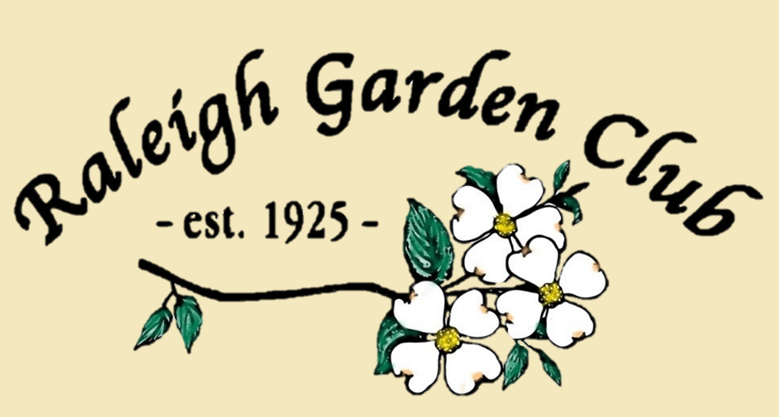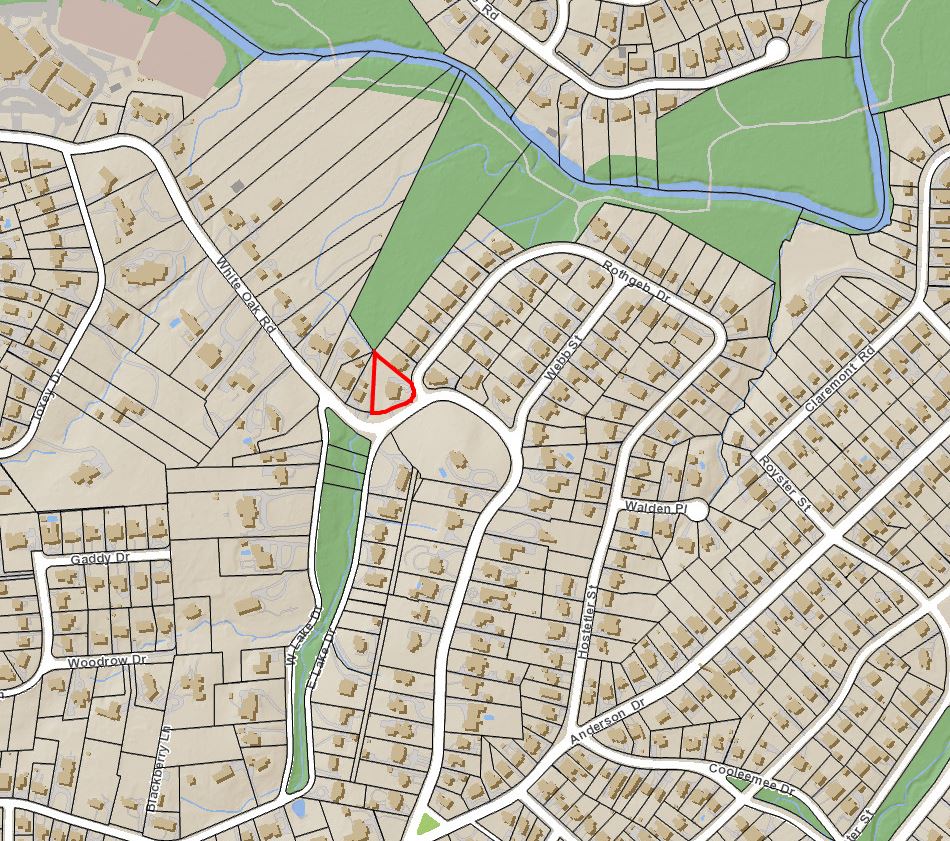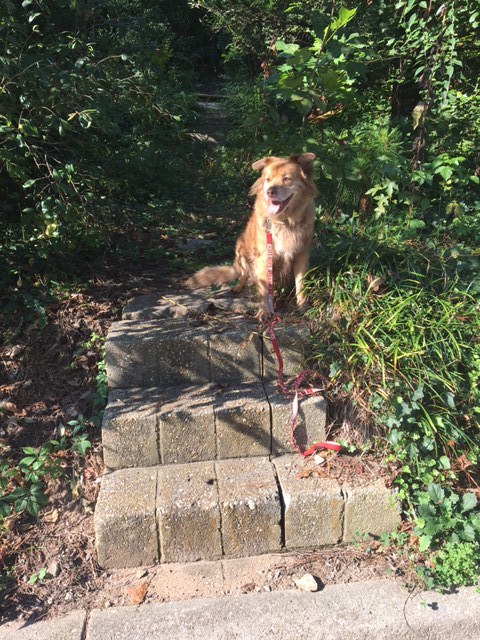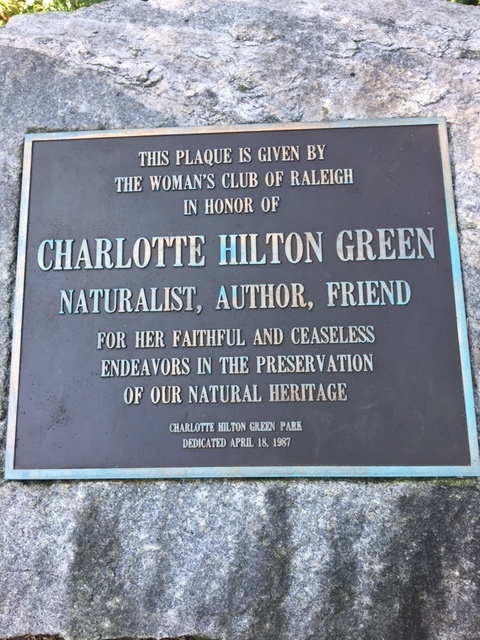Where we left the mystery . . .
In September 2017 I told the stories of several RGC members who left big footprints. The projects are one way of looking at the RGC’s footprints, and that is what our History Books track.
But really it’s people who make footprints. And as Joyce likes to say, “Gardeners are the friendliest, most generous people you’ll ever find.” Maybe that is partly because a garden club is made of people doing what they love – and sharing what they do.
Charlotte Hilton Green was one of the RGC gardeners whose footprint is a garden, in this case now a park, named in her honor. Charlotte Hilton Green was an early and influential champion of the Tar Heel state's natural environment. She was, in the words of her friend and neighbor William Joslin, “the one person in Raleigh most clearly identified with conservation of natural areas.”
In 1938 the Greens purchased a large tract of land on White Oak Road. Mrs. Green began developing Greenacres into a wildlife sanctuary and arboretum. Her consultant in this project was Dr. B.W. Wells, a professor of botany at N.C. State (Green 1939) and the author of The Natural Gardens of North Carolina. Forestry students from the college treated damaged trees, and neighbors helped remove refuse, fallen branches, and undesirable plants. The area became a special place to the many children who loved to play on the rocks and hills, to follow trails once traveled by Indians, and to build dams in the stream. Greenacres was still visited annually by horticulture classes from N.C. State University in 1986.
The Greens were active birders and conservationists, hosting many ornithological sightings at Greenacres. Ornithologist Dr. Arthur Allen recorded many of his first southern birdsong recordings there. Charlotte did a lot of her research on birds here—she had a banding permit from the federal government in the 30s. (*)
Her footprint was a bit of a mystery still in September of 2017. I had read that private citizens raised money to buy and preserve her garden, and planned to make it a park and give it to the city. Named after her, of course. But it wasn’t listed as one of Raleigh’s parks on their website.
So what happened?
Well thanks to the research of RGC member and researcher extraordinaire, Laurie M., we have the next piece of the story…..
We found out the park succeeded, in a way. Laurie located the park. it is located along White Oak Road, tucked between East Lake and West Lake Drives. She lives close by and runs through it. And then she found the map that showed it as part of Raleigh. But there are no signs to tell you what it is. So she kept digging… and found more.
Laurie found out: Two of the 3 houses the Greens built are still up along White Oak Rd. The first house they built was torn down at some point. They called their home garden “Greenacres.”
Laurie also spoke with a woman who grew up a few houses away from Charlotte—this was Nell Joslin, and her parents set up the Joslin Conservation area along W. Lake Dr. According to Nell, the northern part of the tiny park was always city property. In the 1980s, a developer bought 3 lots at the lower end of the park which abuts White Oak. Nell’s father William Joslin got the neighborhood together and basically had the land condemned and the developer was forced to sell the lots back to the city, and along with the money the neighborhood raised, they added these lots to the end of the park and named it the Charlotte Hilton Green Park.
Then we found the deed that did indeed give the land to the city for a park. The donors made 3 conditions: 1) the property shall be used and maintained so as to preserve to the maximum extent possible the natural scenic value of the property.
2) the property shall be devoted exclusively to public park purposes
3) there shall be no destruction or removal of trees (except if unsafe or diseased).. there shall be no erection of buildings, signs or structures, and no changes is the appearace or topography of the property except in developing and maintaining greenways or trails, or park facilities.
And I found the Park is listed in the Adopt a Park Program by Raleigh Dept. of Parks, Recreation and Cultural Resources.
But as a footprint, it is still fairly obscured. No passer by would know this is a famous wildlife garden turned park and named in honor of Charlotte Hilton Green.
* Source: www.carolinabirdclub.org/chat/issues/1986/v50n4charlottehiltongreen.pdf






